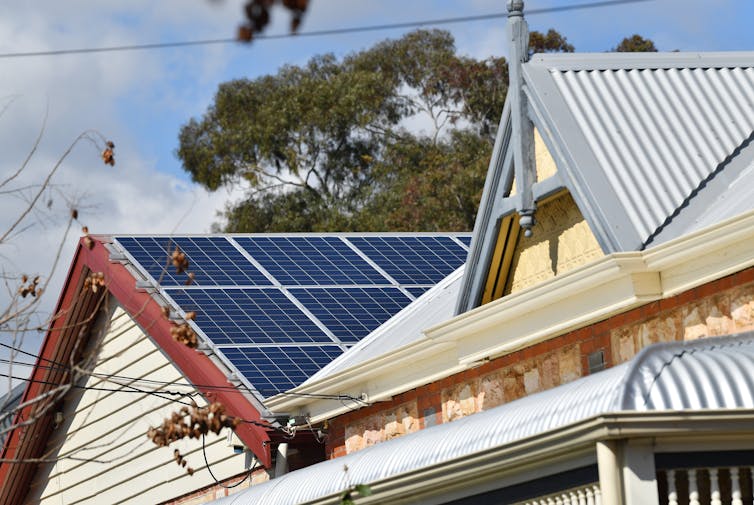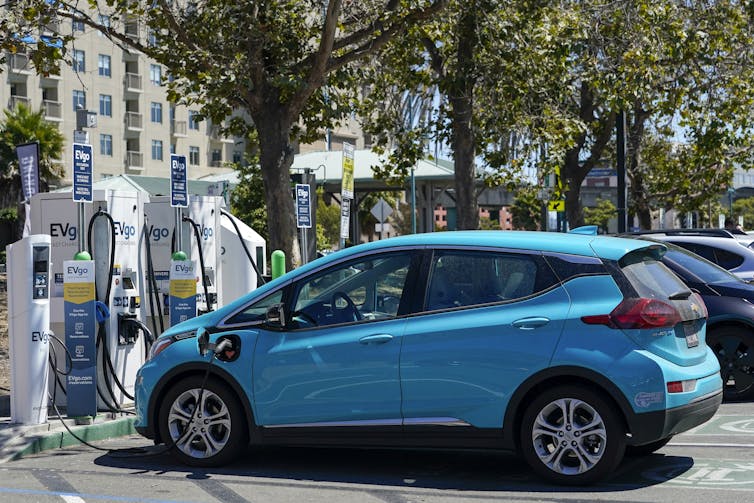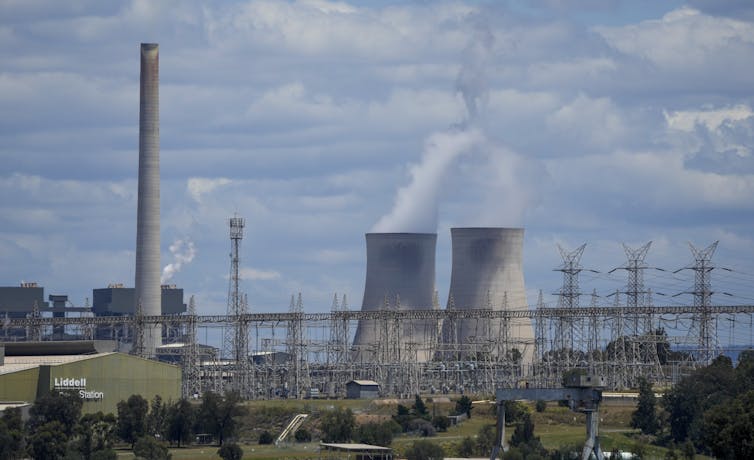Power intake – whether or not its heating your own home, riding, oil refining or liquefying herbal fuel – is liable for round 82% of Australia’s greenhouse fuel emissions.
Except Australia reduces its calories intake, my contemporary learn about reveals it’ll be nearly not possible for renewable calories to exchange fossil fuels by way of 2050. That is what’s required to achieve our net-zero emissions goal.
But, because the country’s financial system recovers from the pandemic, Australia’s calories intake is most probably to go back to its pre-pandemic enlargement. The learn about identifies two predominant justifications for decreasing calories intake (or “calories descent”):
- the most probably sluggish charge of electrifying delivery and heating
- that renewable calories will probably be chasing a chickening out goal if calories intake grows.
Power descent isn’t an not possible job. Certainly, in 1979, Australia’s overall ultimate calories intake was once about part that during 2021. Key to good fortune will probably be transitioning to an ecologically sustainable, steady-state financial system, with greener applied sciences and industries.
Contents
What’s slowing down enlargement in renewables?
To transition to sustainable calories, Australia should electrify delivery and combustion heating, whilst changing all fossil-fuelled electrical energy with calories potency and renewables, which can be the least expensive calories applied sciences.
Renewables may also be rolled out abruptly: wind and sun farms may also be in-built only some years and home rooftop sun may also be put in in one day.

AAP Symbol/David Mariuz
However fast enlargement in wind and sun is slowed by way of 3 vital infrastructural and institutional necessities of the electrical energy business:
- to determine Renewable Power Zones (a cluster of wind and sun farms and garage)
- to construct new transmission strains and medium-term calories garage comparable to pumped hydro
- to reform electrical energy marketplace regulations to lead them to extra appropriate for renewable electrical energy.
Those take longer than development sun and wind farms and for much longer than putting in rooftop sun and batteries. However, they might be absolutely applied inside a decade.
In reality, transitioning current fossil-fuelled electrical energy era, comparable to coal-fired energy stations, to 100% renewables might be able to be finished by way of the early 2030s.
However constructive calculations according to how briefly we will construct sun and wind farms and their infrastructure forget about the truth that the expansion of renewable electrical energy is restricted by way of electrical energy call for.
When current coal-fired energy stations had been changed by way of renewables, electrical energy call for will probably be decided by way of how abruptly we will electrify delivery and combustion heating. Those are the predominant duties that may restrict the long run enlargement charge of renewable electrical energy. They’ll most probably be applied slowly, regardless of the urgency of local weather alternate.
Learn extra:
Why Hard work’s new tax minimize on electrical cars would possibly not let you purchase one anytime quickly
Families and industries have giant investments in petrol/diesel cars and combustion heating. They could also be reluctant to exchange those running applied sciences, with out considerable executive incentives.
Up to now, efficient federal executive insurance policies are nearly non-existent for transitioning delivery and heating, which can be in combination liable for 38% of Australia’s emissions.
This month’s announcement of a long run “session” on fleet gas potency requirements is the federal government’s tentative first step.

AP Picture/Godofredo A. Vásquez
Chasing a chickening out goal
If we take a look at simplest share enlargement charges, the duty of renewable electrical energy seems misleadingly simple. From 2015 to 2019, Australia’s renewable electrical energy grew by way of 62% – a very good fulfillment.
However, it was once ranging from a small base. This implies its building up in calories manufacturing over that length was once simplest rather larger than the expansion of overall ultimate calories intake – comprising electrical energy, delivery and heating – which remains to be most commonly fossil fuelled.
At the international scale, the placement is even worse. On account of enlargement in overall ultimate calories intake, the percentage of fossil fuels was once the similar in 2019 as in 2000: particularly round 80%.
The problem for renewable calories is sort of a runner seeking to destroy a report whilst officers are striding away down the observe with the completing tape.
This case isn’t the fault of renewable calories applied sciences. Nuclear calories, for instance, would develop a lot more slowly and would take even longer to meet up with rising intake.

AP Picture/Mark Baker, Report
In one of the crucial eventualities I discover in my learn about, Australia’s overall ultimate calories intake grows linearly on the pre-pandemic charge from 2021 to 2050. Then, renewable electrical energy must develop at 7.6 instances its pre-pandemic charge to catch up by way of 2050.
However, if renewable electrical energy enlargement is exponential, it must double each 6.8 years till 2050.
Taking into account that long run enlargement in renewable electrical energy will probably be restricted by way of the speed of electrifying delivery and combustion heating, each the specified linear and exponential enlargement charges seem not possible.
Conceivable answers
Each the Global Power Company and modelling executed for the Intergovernmental Panel on Local weather Trade keep away from the issue by way of assuming large-scale carbon dioxide seize and garage or without delay taking pictures CO₂ from the air will turn into commercially to be had.
However depending on those unproven applied sciences is speculative and dangerous. Due to this fact, we desire a Plan B: decreasing our calories intake.
Learn extra:
Engineers have constructed machines to wash CO₂ from the air. However will it halt local weather alternate?
My learn about displays if shall we halve 2021 calories intake by way of 2050, the transition could also be conceivable. This is, if uncooked fabrics (comparable to lithium and different vital minerals) are to be had and native production might be a great deal larger.
As an example, if the overall ultimate calories intake declines linearly and renewable electrical energy grows linearly, the latter would simplest need to develop at about 3 times its 2015–2019 charge to exchange all fossil calories by way of 2050. For exponential enlargement, the doubling time is 9.4 years.
Enhancements in calories potency would assist, comparable to house insulation, environment friendly electric home equipment, and sun and warmth pump sizzling water programs. On the other hand, the Global Power Company displays such enhancements will probably be not going to scale back call for sufficiently.
We want behavioural adjustments inspired by way of socioeconomic insurance policies, in addition to technical.
Implications of calories descent
To cut back our calories intake, we would wish public debate adopted by way of insurance policies to inspire greener applied sciences and industries, and to make socioeconomic adjustments.
This don’t need to contain deprivation of key applied sciences, however relatively a deliberate relief to a sustainable stage of prosperity.
It will be characterized by way of higher emphasis on making improvements to and increasing public delivery, bicycle paths, pedestrian spaces, parks and nationwide parks, public well being centres, public training, and public housing.
Learn extra:
Affluence is killing the planet, warn scientists
This method of offering common fundamental services and products reduces the will for prime earning and its related prime intake. As analysis in 2020 identified, the arena’s wealthiest 40 million individuals are liable for 14% of lifestyle-related greenhouse fuel emissions.
And on a world scale, calories descent might be financed by way of the wealthy nations, together with Australia. Most of the people would revel in a greater high quality of existence. Power descent is a key a part of the pathway to an ecologically sustainable, socially simply society.
Supply By way of https://theconversation.com/itll-be-impossible-to-replace-fossil-fuels-with-renewables-by-2050-unless-we-cut-our-energy-consumption-189131


